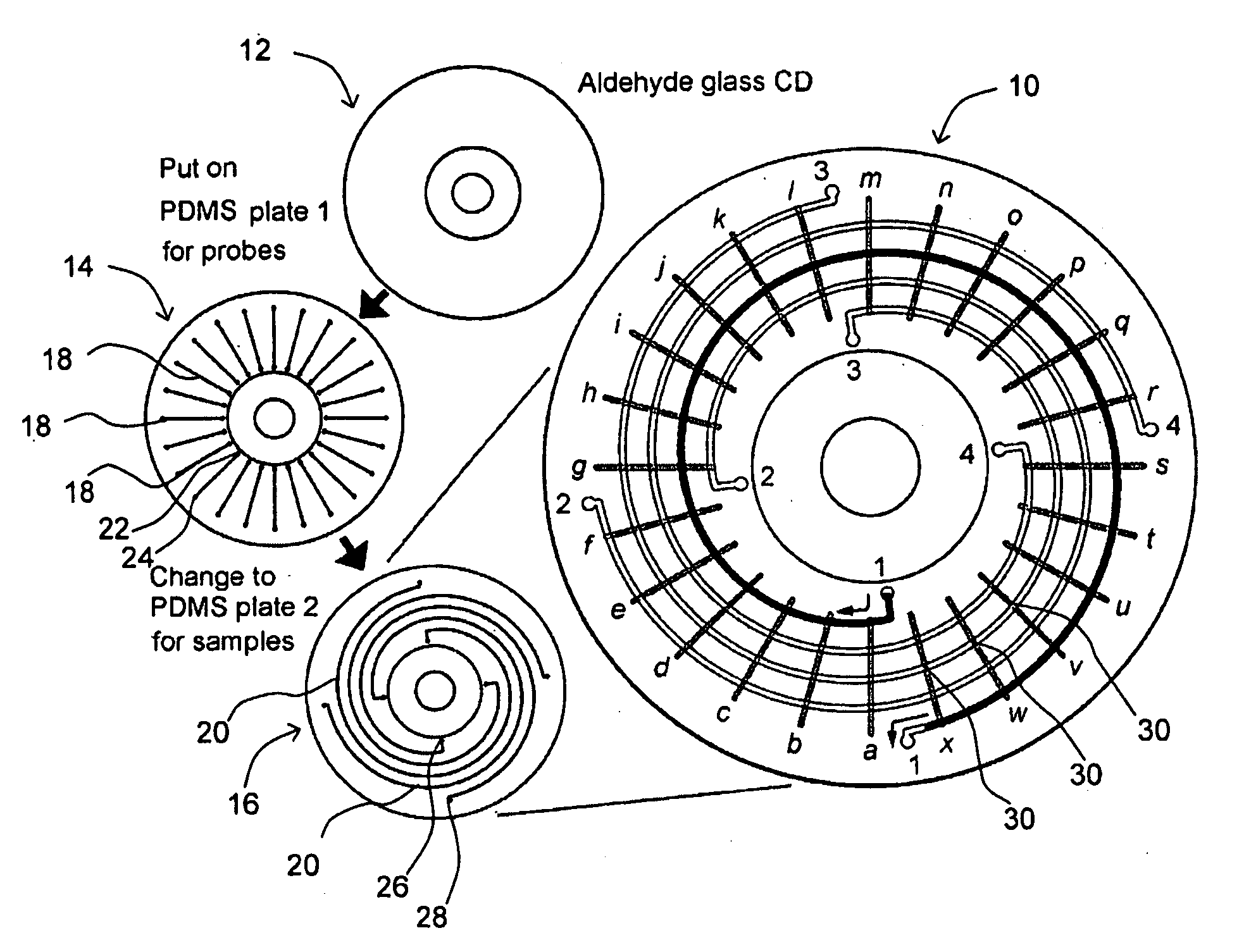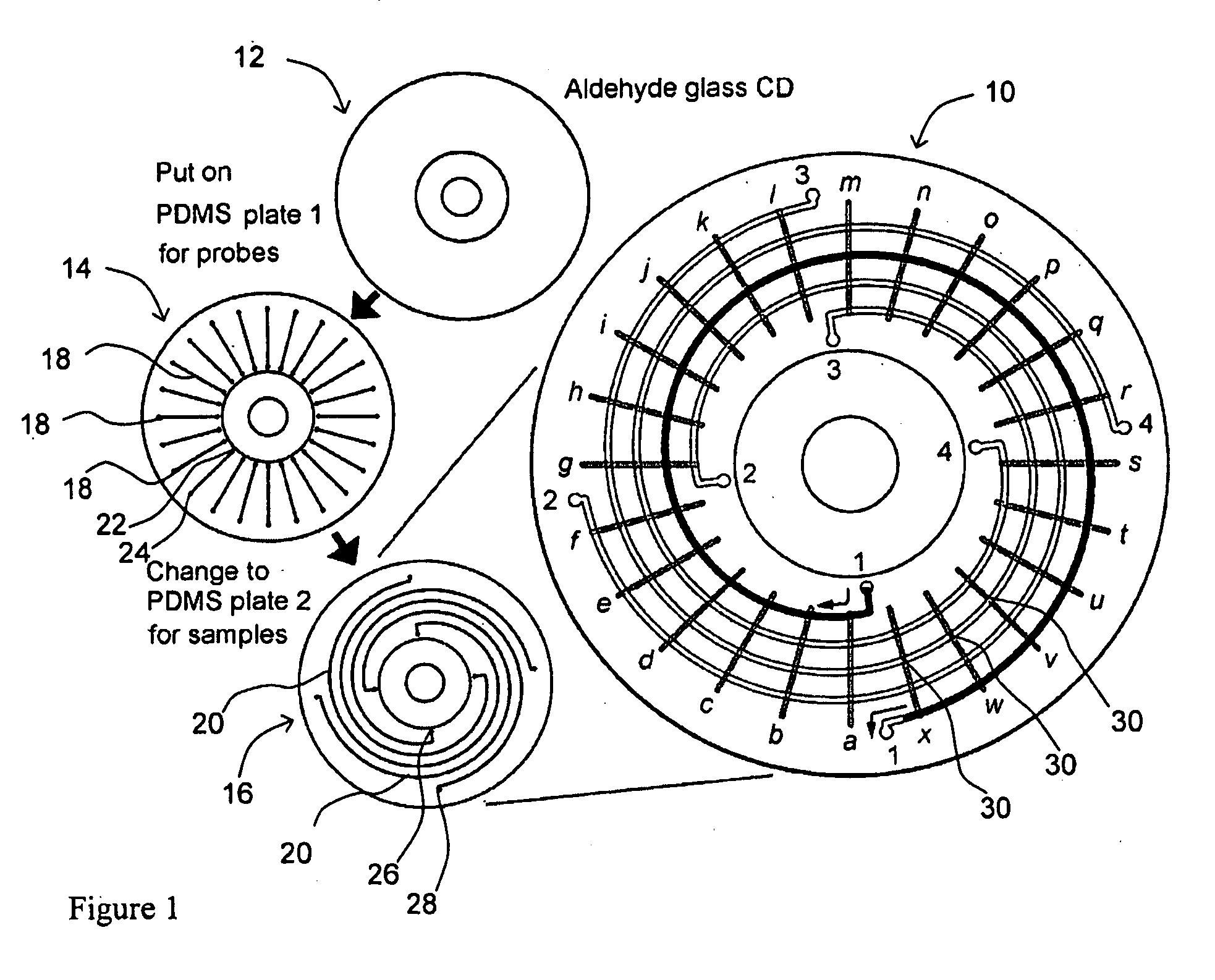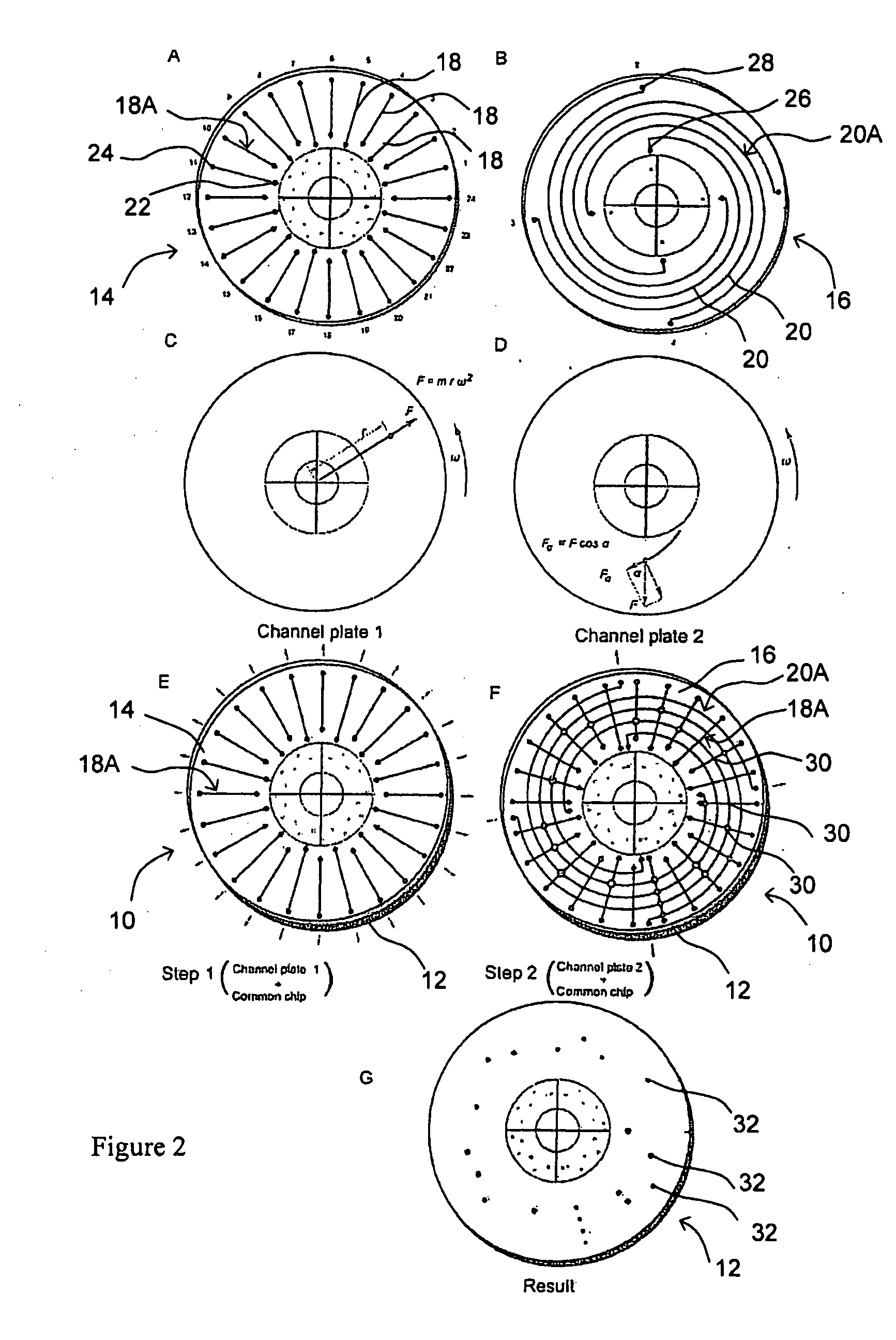Microfluidic microarray assemblies and methods of manufacturing and using
a microfluidic microarray and assembly technology, applied in the field of manufacturing and using of microarray devices, can solve the problems of inability to use cdna, high cost of photolithographic synthesis methods, and inability to achieve cdna synthesis,
- Summary
- Abstract
- Description
- Claims
- Application Information
AI Technical Summary
Benefits of technology
Problems solved by technology
Method used
Image
Examples
example 1
DNA Hydridization
1.1 The Channel Plates for the Creation of a 96*96 Hybridization Microarray
[0092]FIG. 6 shows the design of first and second channel plates 14, 16 in one embodiment of MMA 10. In FIG. 6A, first channel plate 14 has 96 microfluidic channels 18 for DNA probes arranged in a radial pattern. The left inset shows the molding master design of 5 microfluidic channels arranged in a radial pattern and the staggered, alternating positions of inlet reservoirs 22. The right inset shows the appearance of 5 PDMS microfluidic channels 18 formed from the molding master. In FIG. 6B, second channel plate 16 has 96 microfluidic channels 20 for samples arranged in a spiral pattern. The left inset shows the molding master design of the microfluidic channels arranged in a spiral pattern and the staggered, alternating positions of inlet reservoirs 26. The right inset shows the actual appearance of PDMS microfluidic channels 20 formed from the molding master. The size of the plate is 92 mm ...
example 2
Fluid Flow Velocity in the Spiral Microfluidic Channels
[0111]Liquid was successfully filled into spiral microfluidic channels during spinning or rotation of MMA 10. The result is shown in FIG. 13 in which 4 spiral microfluidic channels were filled with solutions containing blue food dye (Scott-Bathgate, Vancouver, BC). In one spiral microfluidic channel, the solution flowed from inlet reservoir A to outlet, reservoir C, see inset. In another spiral microfluidic channel, the solution flowed from inlet reservoir B to outlet reservoir D, see inset. The microfluidic channels were illuminated by a stroboscope light (Monarch, Nova-Strobe DA Plus 115) at the same frequency as the rotation speed. Using the stroboscope light, the movement of the fluid in the microfluidic channels can be seen flowing even though the chip is spun at high speed.
[0112]To study the fluid velocity in the spiral microfluidic channels, the positions of the advancing liquid front meniscus during filling of the spiral...
example 3
Cellomics Studies Using the MMA
[0127]Cell-based assays can also be conducted using MMA 10. The assays may be carried out using a batch of cells or single cells. The National Cancer Institute (NCI) has identified a total of 60 cancer cell lines, (NCI-60), which can be exposed to thousands of compounds for drug discovery.51 These cell lines are related to specific cancers: Lung (e.g. A549), Colon (e.g. HT29), Breast (e.g. estrogen-sensitive MCF7 and estrogen-insensitive MDA-MB-231), Ovarian, Leukemia (e.g. Jurkat), Renal, Melanoma, Prostate and Central Nervous System.
[0128]In these experiments, test chip 12 is arrayed with cells which are exposed to various drugs at different concentrations. For instance, 60 cells lines can be constructed as a cell microarray on a glass surface test chip 12 and hundreds of chemicals can be exposed to the cells at one time under the same flow and media conditions. For proof of concept, the 4 above cell lines, which are of biosafety level 1, are selecte...
PUM
| Property | Measurement | Unit |
|---|---|---|
| volumes | aaaaa | aaaaa |
| volumes | aaaaa | aaaaa |
| volumes | aaaaa | aaaaa |
Abstract
Description
Claims
Application Information
 Login to View More
Login to View More - R&D
- Intellectual Property
- Life Sciences
- Materials
- Tech Scout
- Unparalleled Data Quality
- Higher Quality Content
- 60% Fewer Hallucinations
Browse by: Latest US Patents, China's latest patents, Technical Efficacy Thesaurus, Application Domain, Technology Topic, Popular Technical Reports.
© 2025 PatSnap. All rights reserved.Legal|Privacy policy|Modern Slavery Act Transparency Statement|Sitemap|About US| Contact US: help@patsnap.com



